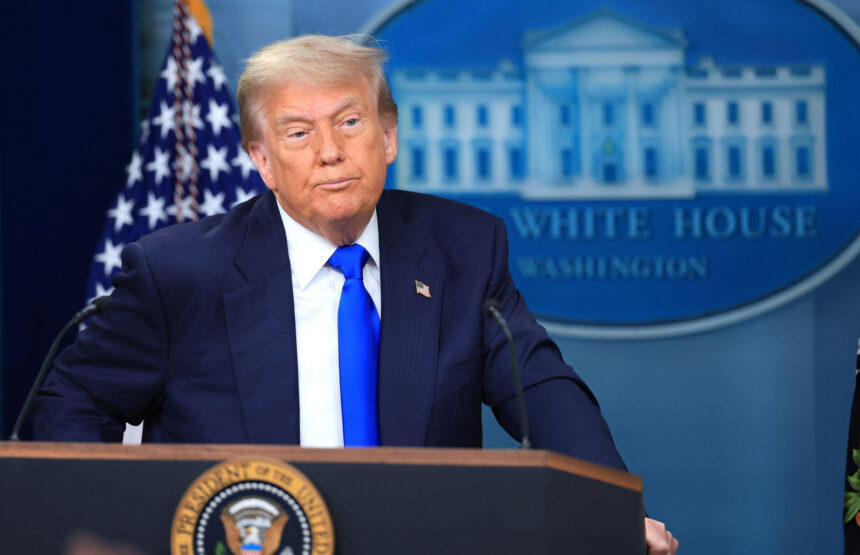With the 2024 presidential election approaching the United States has re-entered the international economic scene through Donald Trump’s leadership to create significant
international effects. The announcement that the United States will apply a 50% tariff on copper imports along with a potential 200% tariff on pharmaceuticals from particular nations including India stands as a startling development.
Trump’s explanation of “restoring American manufacturing dominance” masks the fact that these sudden policy changes threaten to disturb worldwide trade patterns which will affect exporters from resource-rich countries and pharmaceutical leaders such as India.
What Trump Announced: A Breakdown
On July 8, 2025, Donald Trump, now leading the Republican front and operating under a revived “America First 2.0” strategy, declared the following:
- A 50% tariff on copper imports, citing concerns over national security and critical supply chains.
- A warning of a 200% tariff on pharmaceutical imports, particularly targeting countries that allegedly “undercut” U.S. innovation by exporting cheaper generics.
- Possible withdrawal from “unfair multilateral trade deals,” signaling a tougher stance on WTO commitments.
The Affected Countries:
- Chile, Peru, India, and Zambia (top copper exporters)
- India and China (leading low-cost pharma exporters to the U.S.)
India in the Crosshairs: The Double Whammy
India stands critically exposed on both fronts — copper and pharma.
1. Copper Exports: Minor Volume, Major Impact
India is not a leading global copper exporter like Chile or Peru. However, it exports refined copper to the U.S., which serves specific needs in the U.S. tech and construction sectors.
According to India’s Ministry of Commerce:
- India exported $122 million worth of copper products to the U.S. in FY 2023–24.
- A 50% tariff could render these exports uncompetitive, forcing Indian copper producers to divert trade routes or cut prices.
- Hindalco Industries, Sterlite Copper, and Hindustan Copper Ltd. are likely to feel the ripple effects on margins and volume.
Moreover, it could hurt India’s growing ambitions to be a green tech hub, since copper is essential for electric vehicles, solar panels, and smart grid infrastructure.
2. Pharma Exports: A Serious Blow
India stands exposed to major risks because of its pharmaceutical sector. The pharmaceutical industry identifies India as the “pharmacy of the world” because it provides 40 percent of the generic drugs used in the U.S. every year.
Here’s what’s at stake:
- India’s pharma exports to the U.S. totaled $7.1 billion in FY 2023–24 (Source: Pharmexcil).
- The U.S. FDA has over 300 Indian facilities on its approved list.
- Indian companies like Sun Pharma, Dr. Reddy’s, Cipla, and Lupin are deeply embedded in the U.S. supply chain.
A 200% tariff would make Indian generics unviable in the American market —
Why Trump is Doing This
Trump uses two main economic arguments to defend his forceful approach to economic policy:
- Reshoring Manufacturing: The president argues that America’s dependence on India and China creates national security risks in essential sectors such as pharmaceuticals and mineral resources.
- Election Rhetoric: His strategy of attacking foreign exporters strongly appeals to voters in states which have lost factories and face rising drug prices.
Many analysts warn that this approach might spark a trade war while causing U.S. healthcare expenses to rise and leading to further disengagement from international supply networks.
India’s Potential Responses
1. Diplomatic Pushback
India’s Commerce Ministry along with MEA have shown their intention to discuss this issue in both bilateral negotiations and WTO meetings. The U.S. Senate and pharma lobbying
groups could be contacted through confidential diplomatic channels.
2. Diversification
India plans to establish new trading relations with the EU and ASEAN nations and African and Middle Eastern markets for both its pharmaceutical sector and copper industry. Present discussions focus on expanding trade relations with UAE together with Saudi Arabia and Brazil.
3. Strengthening Atmanirbhar Bharat
The current situation provides India with an opportunity to develop its independence through these methods:
- Accelerating copper recycling tech.
- Incentivizing
Global and Market Reactions
The pharmaceutical sector index of Nifty experienced a 2.4% decrease during the beginning of trading after the announcement.
- Sun Pharma stock prices declined by 3.1% while Lupin shares dropped by 2.8%.
- Copper producers’ stocks were slightly less affected but still in the red.
Strategic Crossroads for India
Donald Trump’s tariff strategy probably pursues political goals but generates major economic impacts which place India at a crucial strategic position. The government of New
Delhi needs to act quickly and intelligently by practicing diversified diplomacy alongside domestic innovation and global partnerships.
India currently faces a vital challenge to protect its export market through international trade rule changes while its global aspirations exceed geopolitical uncertainty.
The Vue Times Verdict:
The tariff represents more than a tariff because it puts Indian economic diplomacy and export stability to the test during an era of growing protectionism. The path to becoming a $5 trillion economy demands skillful management of economic shocks to sustain ongoing success.










